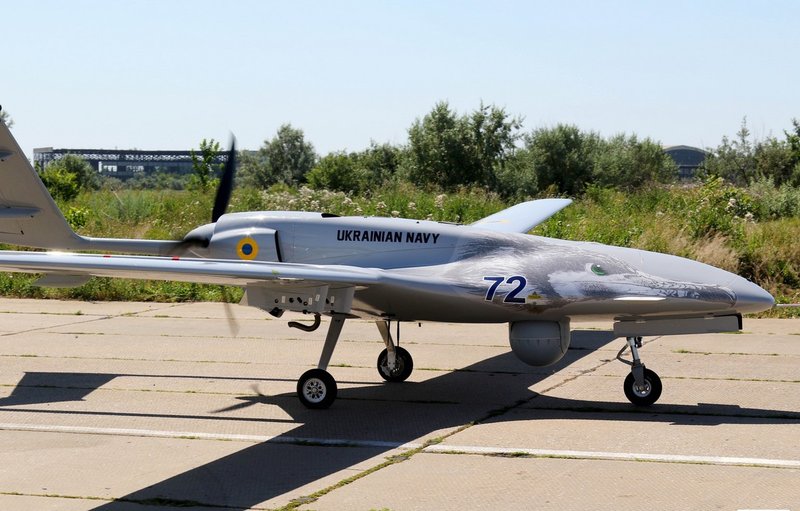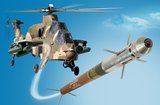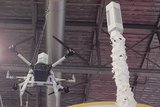Analysis: Europe emerges as a crucial strategic market for UAV manufacturers
Across Europe, militaries have been working through the operational benefits and implications of employing drones. (Photo: UK MOD Crown copyright)
The global military UAV market is experiencing a dynamic transformation, with an estimated US$137.8 billion in unawarded contracts. Among the regions leading this charge, Europe has emerged as a significant and strategic market for UAV manufacturers.
This development is driven by a combination of geopolitical factors, evolving procurement strategies, and the influence of recent conflicts such as the Russo-Ukrainian war.
North America vs. Europe: A Comparative Landscape
In North America, the UAV market is heavily concentrated, with $58.5 billion in unawarded spending distributed among just 16.9% of procurement programmes. This means that each programme tends to be large-scale, involving substantial financial commitments and significant production volumes.
Related Articles
The Netherlands selects Airboxer UAV
British drone maker unveils Sky Mantis 2 mini rotary wing UAV
Serbia seeks 5,000 expandable UAVs, accelerates production
In contrast, Europe’s forecasted UAV expenditure of $51.1 billion is spread across a much higher concentration of 39.9% of global unawarded programmes. Consequently, the average value of each European UAV programme is less than half that of its North American counterpart.
Europe’s fragmented UAV market, coupled with the lessons learned from recent conflicts, has created a fertile ground for UAV manufacturers. The higher number of less valuable programmes in Europe makes it an appealing market for many drone manufacturers.
Companies can engage in multiple projects, thereby spreading their risk and increasing their chances of securing contracts.
Additionally, lower-value programmes often have lower entry barriers, making them accessible to smaller companies with limited production capacities. This environment encourages innovation and competition, as manufacturers strive to differentiate their offerings and meet the specific needs of various European nations.
Impact of the Russo-Ukrainian war
The short-term emergency procurements launched by multiple European nations in response to the Russo-Ukrainian war have significantly contributed to the financial fragmentation observed in the region.
The conflict has vividly demonstrated the strategic importance of UAVs, with platforms like Ukraine’s Bayraktar TB2 proving effective early in the war. These drones played crucial roles in targeting and destroying various Russian assets, including tanks, armoured fighting vehicles, and air defence systems.

As the conflict has progressed, smaller ISR drones and loitering munitions have become increasingly vital. Both Ukraine and Russia have deployed a mix of domestically produced and imported platforms, such as the Switchblade 300 and Shahed-136. This operational experience has provided invaluable lessons for European nations, which are now keenly integrating UAVs into their defence strategies.
For example, France’s Colibri and Larinae programmes were expedited following the outbreak of the Russo-Ukrainian war. Similarly, the UK announced a substantial package in 2024, including more than 10,000 drones for Ukraine. Such initiatives highlight the urgency with which European countries are enhancing their UAV capabilities in response to the evolving nature of modern warfare.
Emerging technological trends in UAV development
The UAV market is poised for significant transformation over the next decade, driven by advancements in several key technological areas.
One of the most significant trends is autonomy, which includes not only the ability for UAVs to operate and make decisions independently but also enabling a single operator to control multiple platforms. This involves further development of ‘leader-follower’ protocols and ‘abort and retarget’ or ‘abort and return to base’ capabilities.
Effective, reliable, and controllable autonomy is expected to be a major focus of development in the foreseeable future.
Securing UAV systems, especially against cyber threats, will be another critical area. With commercially available components being relatively easy to hack, making UAV systems secure will be both intensive and expensive.
This will dramatically influence the design and development of hardened systems, components, data processing, and communication components.
Swarming technology, which involves using large numbers of relatively cheap drones to overwhelm defences, is also on the rise.
The key question for nations will be whether to invest in small numbers of highly capable UAS or large numbers of less individually effective drones. Alternatively, a ‘belt and braces’ approach might be adopted to cover a broad operational spectrum.
Counter-UAS capabilities are another emerging trend. As UAVs become more prevalent, developing methods to counter them becomes crucial. This will likely involve integrated multi-level air defence networks that can handle a variety of threats.
Future projections and trends
Looking ahead, the European UAV market is expected to continue evolving, with significant unawarded contracts anticipated over the next few years. In 2024, $1.485 billion in unawarded drone contracts are expected to be awarded, representing 38.6% of the global total.
For 2025 and 2026, the unawarded contracts amount to $1.038 billion and $922.3 million, respectively. Although Europe’s share of the global unawarded drone expenditure is projected to decline slightly during these years, it is expected to rise again between 2027 and 2030.
This resurgence will be driven by major European UAS (Unmanned Aerial Systems) projects, such as the Next-Generation Weapon System (NGWS) and the UK’s Loyal Wingman programme. These initiatives are poised to shape future UAV development, focusing on autonomy, edge computing, sensor integration, and swarm command and control.
The European UAV market presents a strategic opportunity for manufacturers, driven by fragmented spending, evolving procurement strategies, and the impact of recent conflicts.
As Europe continues to integrate UAVs into its defence strategies, manufacturers that can navigate this complex landscape and offer innovative solutions will find ample opportunities for growth and success.
- For a more detailed examination of the UAV market and the opportunities for European manufacturers, see Defence Insight and Cytec’s 3500-word market report.
Shephard's Eurosatory 2024 coverage is sponsored by:

More from Eurosatory 2024 | View all news
-
![India expands ammunition production with Adani–Thales collaboration]()
India expands ammunition production with Adani–Thales collaboration
Adani Defence & Aerospace has teamed up with Thales Belgium to manufacture and assemble NATO-standard 70mm calibre ammunition, strengthening India's self-reliance in defence production.
-
![Naval artificial intelligence demonstrated in new applications in Paris]()
Naval artificial intelligence demonstrated in new applications in Paris
The prevalence of AI-enabled solutions from startups and major defence company at this year’s Eurosatory highlighted both the potential benefits and trust-related challenges associated with its adoption.
-
![Thales completes delivery of upgraded command and staff trainer to Polish Land Forces]()
Thales completes delivery of upgraded command and staff trainer to Polish Land Forces
Thales unveiled its CAST system at Eurosatory 2024 showcasing its advanced capabilities in enhancing situational awareness and decision-making skills.
-
Sogitec combines Sword, Genius and HORUS for virtual/constructive demonstrator
The French company has integrated its Genius UAS and HORUS helicopter simulators with MASA’s Sword constructive simulation as it aims to achieve operational orders by the end of 2025.
-
![Saab releases details on Sirius Compact EW sensor]()
Saab releases details on Sirius Compact EW sensor
Sirius Compact can be operated as a stand-alone unit or as part of a network with several sensors typically supporting Ground Based Air Defence with target information.
-
![Thales takes new HF communications system from ship to shore]()
Thales takes new HF communications system from ship to shore
The HF XL family was unveiled at last month’s Eurosatory 2024 with the company pushing the system’s capability of searching out unjammed channels or channels with the highest data rate available.

























